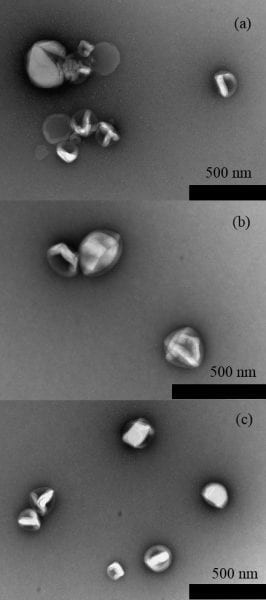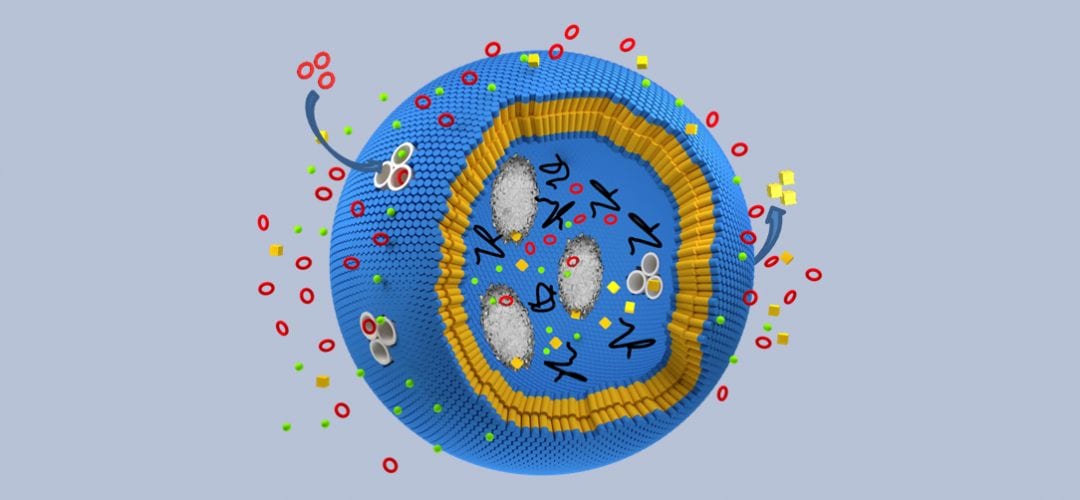
TEM image of empty nanoreactors (a), nanoreactors prepared with Ficoll (b), and nanoreactors prepared with PEG (c). More information here.
The compartmentalization of living cells presents itself in the form of organelles–nuclei, mitochondria, lysosomes, vesicles, etc.,–enclosed in the cell membrane. A major challenge for scientists is the emulation of such structures, and the study of the subsequent activity and processes involved in such naturally-optimized structures and their corresponding functions.
A better understanding of complex cellular environments is required. Towards this goal, a new investigation from Wolfgang P. Meier at the University of Basel was recently published in Small. For the first time, the cell organelle has been mimicked using polymeric structures while allowing for the influence of the natural surroundings of enzymes. These nanoreactors enabled the measurement of enzyme kinetics in confined spaces. This is an important parameter for the design of artificial organelles, and in their potential application in enzyme replacement therapies.
The research provides insight into the influence of environmental factors on enzymatic performance by studying horseradish peroxidase kinetics within a crowded environment inside artificial nanoreactors. For the first time, the activity of an enzyme in a crowded environment vs a nonencapsulated enzyme was studied. Electron paramagnetic resonance (EPR) was used to determine the efficiency of the crowding agent encapsulation, while fluorescence correlation spectroscopy (FCS) was used to follow the enzyme encapsulation efficiency. The enzyme–substrate affinity increased with the influence of the crowded environment and the encapsulation in the nanoreactor. For more information, view the article here.

















